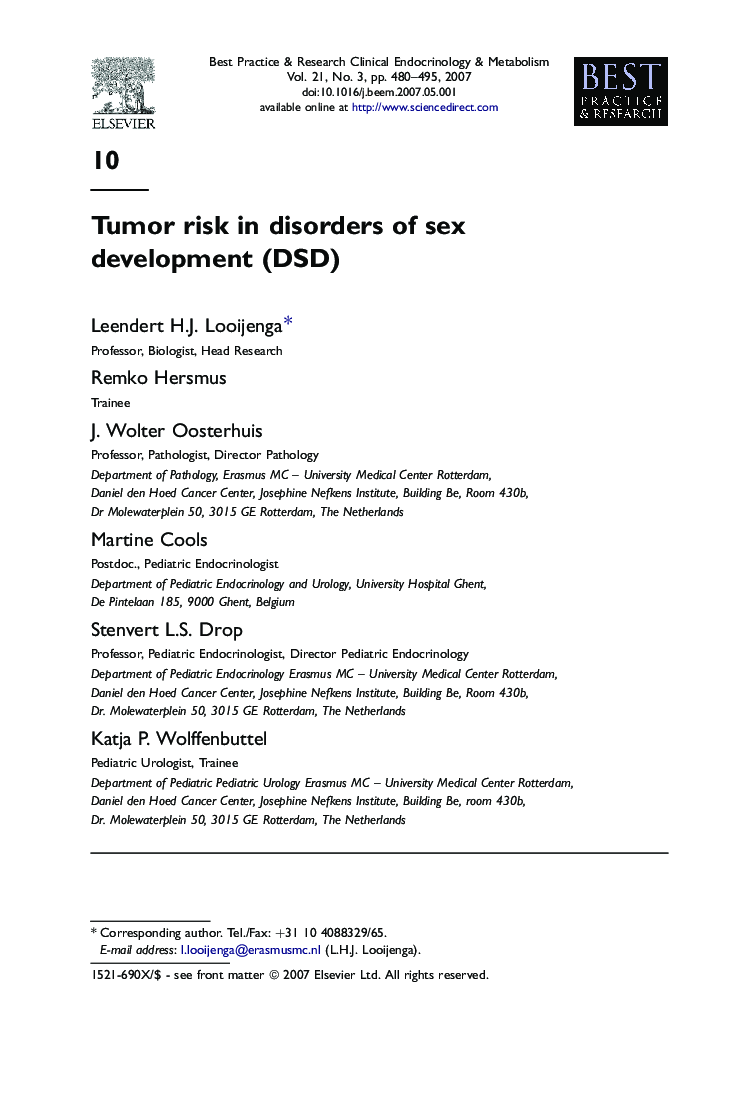| کد مقاله | کد نشریه | سال انتشار | مقاله انگلیسی | نسخه تمام متن |
|---|---|---|---|---|
| 2792257 | 1155019 | 2007 | 16 صفحه PDF | دانلود رایگان |

Disorders of sex development (DSD), previously referred to as intersex disorders, comprise a variety of anomalies defined by congenital conditions in which chromosomal, gonadal, or anatomical sex is atypical. Besides issues such as gender assignment, clinical and diagnostic evaluation, surgical and psychosocial management, and sex steroid replacement, the significantly increased risk for developing specific types of malignancies is both clinically and biologically relevant. This relates to germ-cell tumors specifically in DSD patients with hypovirilization or gonadal dysgenesis. The presence of a well-defined part of the Y chromosome (known as the GBY region) is a prerequisite for malignant transformation, for which the testis-specific protein on the Y chromosome (TSPY) is a likely candidate gene. The precursor lesions of these cancers are carcinoma in situ (CIS)/intratubular germ-cell neoplasia unclassified (ITGCNU) in testicular tissue and gonadoblastoma in those without obvious testicular differentiation. Most recently, undifferentiated gonadal tissue (UGT) has been identified as the likely precursor for gonadoblastoma. The availability of markers for the different developmental stages of germ cells allows detailed investigation of the characteristics of normal and (pre)malignant germ cells. Although informative in a diagnostic setting for adult male patients, these markers – such as OCT3/4 – cannot easily distinguish (pre)malignant germ cells from germ cells showing delayed maturation. This latter phenomenon is frequently found in gonads of DSD patients, and may be related to the risk of malignant transformation. Thus, the mere application of these markers might result in over-diagnosis and unnecessary gonadectomy. It is proposed that morphological and histological evaluation of gonadal tissue, in combination with OCT3/4 and TSPY double immunohistochemistry and clinical parameters, is most informative in estimating the risk for germ-cell tumor development in the individual patient, and might in future be used to develop a decision tree for optimal management of patients with DSD.
Journal: Best Practice & Research Clinical Endocrinology & Metabolism - Volume 21, Issue 3, September 2007, Pages 480–495